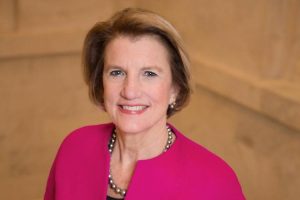CHARLESTON, W.VA.— U.S. Senators Joe Manchin (D-WV), Shelley Moore Capito (R-WV), Roger Wicker (R-MS), Martin Heinrich (D-NM) and Jim Risch (R-ID) last week reintroduced a bipartisan resolution designating April 15-21, 2024, as National Osteopathic Medicine Week.
The bipartisan resolution recognizes the service and dedication of Doctors of Osteopathic Medicine (DOs) and schools of osteopathic medicine nationwide.
“Doctors of Osteopathic Medicine play an essential role in West Virginia’s healthcare workforce,” said Senator Manchin. “I’m proud to lead this bipartisan resolution to honor the incredible contributions osteopathic physicians and schools of osteopathic medicine make to their communities to ensure all Americans have access to quality, specialized healthcare services. Their tireless dedication to their practice is truly commendable and this designation is extremely well deserved.”
“Our bipartisan resolution honors doctors and schools of osteopathic medicine such as William Carey University, which helps Mississippi lead the way in this field,” said Senator Wicker.
“Osteopathic medicine plays a critical part in the health and wellbeing of Americans,” said Senator Capito. “National Osteopathic Medicine Week provides a chance to highlight the incredible work of our Doctors of Osteopathic Medicine, including our innovative, intelligent practitioners and students at our West Virginia School of Osteopathic Medicine in Lewisburg who continue making significant contributions to this field.”
“The American Osteopathic Association applauds Senators Joe Manchin (D-WV) and Roger Wicker (R-MS) for their leadership in designating the week of April 15-21 as National Osteopathic Medicine (NOM) Week,” said Ira P. Monka, DO, FACOFP (Dist.), president of the American Osteopathic Association. “The osteopathic community strives tirelessly to advocate for policies that reflect our values of ensuring patients can access high-quality, comprehensive, whole-person care. This resolution recognizes the critical role osteopathic physicians, practicing across specialties and geographic settings, play in their communities and in shaping the future of healthcare in America.”
“The American Association of Colleges of Osteopathic Medicine extends its gratitude to Senators Manchin, Wicker, Heinrich, Capito, and Risch for their unwavering commitment to osteopathic medicine,” said Robert A. Cain, DO, president and CEO of the American Association of Colleges of Osteopathic Medicine. “As the number of osteopathic physicians grows, so does our holistic approach to wellness, making it more available to patients everywhere. This bipartisan resolution, coupled with the nationwide recognition during National Osteopathic Medicine Week, significantly amplifies the profile and contributions of the osteopathic profession throughout the United States.”
“The osteopathic community appreciates the U.S. Senate’s recognition of National Osteopathic Medicine Week. With the osteopathic approach to wellness, doctors see patients as whole, complex beings and treat them with the philosophy that wellness is not just the absence of pain,” said James W. Nemitz, president of the West Virginia School of Osteopathic Medicine. “WVSOM is West Virginia’s largest medical school and No. 1 in producing physicians who practice in West Virginia. Senators Manchin and Capito have recognized our value to the state and have been outspoken champions of WVSOM and osteopathic medicine, including their recent efforts to secure a $6 million federal appropriation to expand and renovation our existing research facility in the Fredric W. Smith Science Building. We can’t thank them enough for their support and efforts on behalf of WVSOM, our students and the people of West Virginia.”
DOs complete four years of osteopathic medical school as well as internships, residencies and fellowships for three to eight years before they can become licensed and board-certified. DOs make up 11 percent of all physicians in the nation and practice in all specialties, with an emphasis on preventative medicine and comprehensive patient care.









